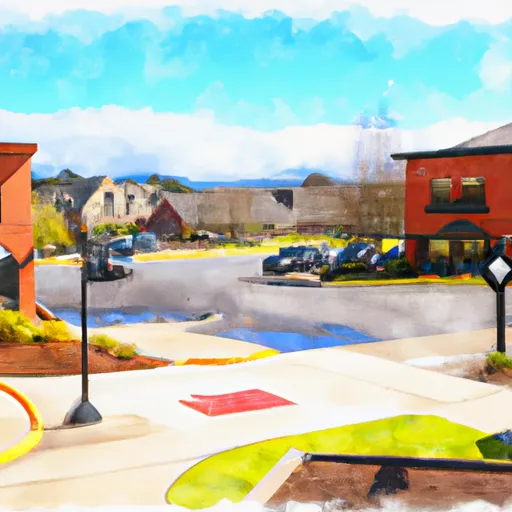-
 Snoflo Premium
Snoflo Premium
Get unlimited access to all our content
With no Ad interruptions! - Start Your Free Trial Login with existing account
Marcus
Eden Index
Climate
8.3
•
Recreation
5.7
•
Community
•
Safeguard
5.3/10

Marcus, Washington is a small town located in the northeastern part of the state. Known for its picturesque landscapes and outdoor recreational opportunities, it attracts visitors looking for a peaceful getaway. The climate in Marcus is classified as a continental climate, characterized by hot summers and cold winters. Summers are typically dry, with temperatures averaging around 80°F, while winters experience snowfall and temperatures dropping to around 20°F.
The town is surrounded by the beautiful Columbia River, which plays a significant role in the hydrology of the region. The river provides ample opportunities for water-based activities such as fishing, boating, and swimming. Additionally, the surrounding area is dotted with numerous lakes and streams, adding to the recreational options available.
Outdoor enthusiasts will find Marcus to be an ideal destination for activities like hiking, camping, and wildlife viewing. The nearby Colville National Forest provides ample hiking trails, allowing visitors to explore the stunning natural beauty of the area. Hunting and birdwatching are also popular pastimes due to the diverse wildlife found here.
In conclusion, Marcus, Washington offers a pleasant continental climate, abundant water resources, and a myriad of outdoor recreational opportunities, making it an attractive destination for nature lovers and adventure seekers alike.
What is the Eden Index?
The Snoflo Eden Index serves as a comprehensive rating system for regions, evaluating their desirability through a holistic assessment of climate health, outdoor recreation opportunities, and natural disaster risk, acknowledging the profound impact of these factors on livability and well-being.
Climate Health Indicator (CHI): 8.3
Marcus receives approximately
508mm of rain per year,
with humidity levels near 74%
and air temperatures averaging around
9°C.
Marcus has a plant hardyness factor of
6, meaning
plants and agriculture in this region thrive during a short period during spring and early summer. Most
plants will die off during the colder winter months.
By considering the ideal temperature range, reliable water supplies, clean air, and stable seasonal rain or snowpacks, the Climate Health Indicator (CHI) underscores the significance of a healthy climate as the foundation for quality living.
A healthy climate is paramount for ensuring a high quality of life and livability in a region, fostering both physical well-being and environmental harmony. This can be characterized by ideal temperatures, reliable access to water supplies, clean air, and consistent seasonal rain or snowpacks.
Weather Forecast
Streamflow Conditions
Upper Columbia
Area Rivers
Upper Columbia
Snowpack Depths
Upper Columbia
Reservoir Storage Capacity
Upper Columbia
Groundwater Levels
Recreational Opportunity Index (ROI): 5.7
The Recreational Opportunity Index (ROI) recognizes the value of outdoor recreational options, such as parks, hiking trails, camping sites, and fishing spots, while acknowledging that climate plays a pivotal role in ensuring the comfort and consistency of these experiences.
Access to outdoor recreational opportunities, encompassing activities such as parks, hiking, camping, and fishing, is crucial for overall well-being, and the climate plays a pivotal role in enabling and enhancing these experiences, ensuring that individuals can engage in nature-based activities comfortably and consistently.
Camping Areas
| Campground | Campsites | Reservations | Toilets | Showers | Elevation |
|---|---|---|---|---|---|
| Evans - Lake Roosevelt National Rec Area | 43 | 1,300 ft | |||
| Trout Lake | 9 | 3,095 ft | |||
| Kamloops - Lake Roosevelt National Rec Area | 17 | 1,335 ft | |||
| Colville Fairgrounds RV Park | None | 1,567 ft | |||
| Canyon Creek | 19 | 2,288 ft | |||
| Snag Cove - Lake Roosevelt National Rec Area | 9 | 1,298 ft | |||
| North Gorge - Lake Roosevelt National Rec Area- | 12 | 1,307 ft | |||
| Gifford - Lake Roosevelt National Rec Area | 42 | 1,329 ft | |||
| Kettle River - Lake Roosevelt National Rec Area | 13 | 1,293 ft | |||
| Kettle Falls - Lake Roosevelt National Rec Area | 76 | 1,315 ft |
Nearby Ski Areas
Catastrophe Safeguard Index (CSI):
The Catastrophe Safeguard Index (CSI) recognizes that natural disaster risk, encompassing floods, fires, hurricanes, and tornadoes, can drastically affect safety and the overall appeal of an area.
The level of natural disaster risk in a region significantly affects safety and the overall livability, with climate change amplifying these risks by potentially increasing the frequency and intensity of events like floods, fires, hurricanes, and tornadoes, thereby posing substantial challenges to community resilience and well-being.
Community Resilience Indicator (CRI):
The Community Resilience Indicator (CRI) recognizes that education, healthcare, and socioeconomics are crucial to the well-being of a region. The CRI acknowledges the profound impact of these elements on residents' overall quality of life. By evaluating educational resources, healthcare accessibility, and economic inclusivity, the index captures the essential aspects that contribute to a thriving community, fostering resident satisfaction, equity, and social cohesion.

